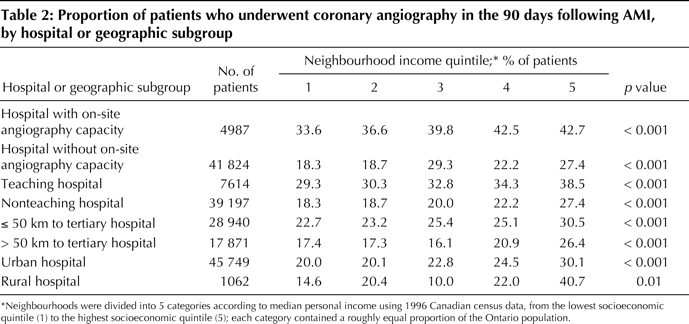Article Figures & Tables
Figures
Fig. 1: The relation between neighbourhood income and angiography use within 90 days of acute myocardial infarction in hospitals and regions with different degrees of access to specialized cardiac services. The relative effects of socioeconomic status on angiography use post myocardial infarction are illustrated by the adjusted odds ratio (OR) and 95% confidence interval (CI) for each $10 000 increase in neighbourhood income (derived from 1996 census data), after adjusting for age, sex, cardiogenic shock, congestive heart failure, pulmonary edema, cardiac arrhythmias, diabetes with complications, stroke, malignant disease, acute renal failure, chronic renal failure and the attending physician's specialty. This figure shows, for example, that for 5 of the 8 hospital and geographic subgroups examined, people living in neighbourhoods with a median income of $10 000 more than that of adjacent neighbourhoods were 16% more likely than their poorer neighbours to receive angiography, after adjusting for baseline factors. (This percentage reflects the point estimates for these 5 odds ratios.) The 95% confidence intervals for urban and rural factors are truncated. Tertiary hospitals are defined as those institutions with on-site angiography and revascularization capacity.













